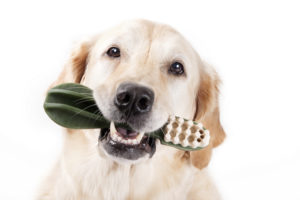Our Tips for a Stress-Free Vet Visit
A visit to the vet can be stressful, especially if your pet has never been to one before. With some preparation and planning, you can ensure that your pet’s vet visit is as stress-free as possible. Here are some tips on how to create a stress-free vet appointment.
Preparation: What You Can Do Before Going to the Vet
Of course, most of us understand that going to see your vet is important for your pet’s well-being. Unfortunately, that isn’t always an easy thing for pets or pet parents to deal with! If you prepare for their visit and take care of them during it, it’ll be less stressful on both ends. First off, find out ahead of time what type of facility and staff they have available.
Get your pet used to being handled by strangers. You can do so by getting them used to grooming sessions with people other than yourself; many animals also do well if they are accustomed to outside or neighborhood noises (such as lawnmowers or sirens).
If your pet has never been in a car before, help them get used to one by allowing them some time inside it. If they are anxious, allow them space and security by carrying them around in it while they’re calm. When you’re ready to take them for a ride, start with short trips and build up their comfort level by taking treats along on each trip—this will be a great way of rewarding your pup when they behave properly on car rides.
Finally, if possible, visit your vet at an off-peak time so that there aren’t as many people around during your appointment. This will help reduce distractions for your pet so that he or she feels more comfortable.
After Your Arrival at the Vet’s Office
After arriving at your veterinarian’s office, allow your pet to spend some time with her favorite people before going in for anything. If she’s nervous, take her on a walk or outside so she can relieve herself before continuing on with their visit. Alternatively, if you have several pets that are coming in for appointments, bring them all in together as opposed to one by one; they won’t be as anxious if they aren’t alone and they may even calm each other down! Another good option is dividing and conquering. Make an appointment that includes multiple pets at once (for example, puppy shots and spaying) so that everyone can get taken care of quickly and easily—and without any fuss.
How to Handle the Waiting Room for a Stress-Free Vet Visit
Regardless of your dog’s breed or age, don’t wait until your dog is sick to bring him in for a checkup. Routine visits help establish trust between you and your veterinarian and provide early detection of health problems. Although most veterinary practices have attempted to lighten up their waiting rooms by adding TVs, toys and fish tanks, being in a strange place with strange smells can be stressful for your pet. This is a great time to talk to your pet. Your calming voice will help relieve your pet of stress or fear. Do not get frustrated or show any negative emotions with your pet. Those stresses will only add more stress for them during their vet visit.
In the Exam Room
At most vets, your pet will have to wait in an exam room before being seen. To help prevent boredom and anxiety, give your pet something familiar so he can relax. This can be a blanket, treat, or toy. Just be careful not to fill too much time with playthings or treats, which could lead him to ignore you when it’s time for examination.
When you take your pet to be examined by a veterinarian, chances are good that he or she will put your pet on a table and have some type of device for checking various body parts. This may make your pet uncomfortable. Before your visit, you can help them by checking their ears and paws. You should also run your hand over their stomachs, and so on. This will prepare them for what the veterinarian will perform in the examination room.





